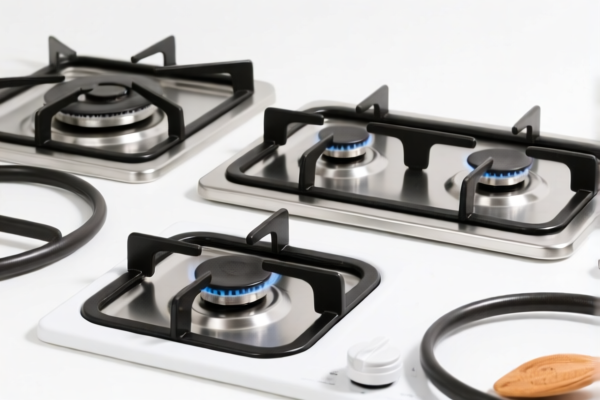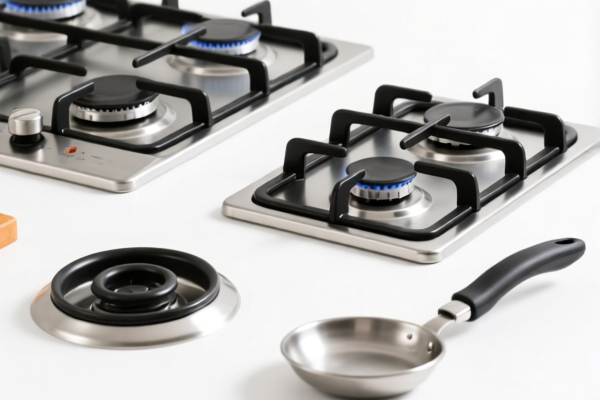| HS Code | Official Doc | Tariff Rate | Origin | Destination | Effective Date |
|---|---|---|---|---|---|
| 8487900080 | Doc | 83.9% | CN | US | 2025-05-12 |
| 8487900040 | Doc | 58.9% | CN | US | 2025-05-12 |
| 8543906500 | Doc | 55.0% | CN | US | 2025-05-12 |
| 8543906800 | Doc | 55.0% | CN | US | 2025-05-12 |
| 8548000000 | Doc | 55.0% | CN | US | 2025-05-12 |
| 7322900045 | Doc | 80.0% | CN | US | 2025-05-12 |
| 7322900015 | Doc | 80.0% | CN | US | 2025-05-12 |
| 7326908688 | Doc | 82.9% | CN | US | 2025-05-12 |
| 7326908688 | Doc | 82.9% | CN | US | 2025-05-12 |




Air Conditioning Parts
Air conditioning parts are the components that comprise an air conditioning system, enabling the cooling and, in some cases, heating of air within a defined space. These parts work together in a refrigeration cycle to transfer heat.
Core Components & Function
The primary function of air conditioning parts is to facilitate the refrigeration cycle, which involves the circulation of refrigerant to absorb heat from the indoor air and release it outdoors. Key components include:
- Compressor: The heart of the system, responsible for compressing refrigerant gas, increasing its pressure and temperature. This pressurized refrigerant is then circulated throughout the system.
- Condenser: Located in the outdoor unit, the condenser releases heat absorbed from inside the building to the outside environment. The refrigerant changes from a high-pressure gas to a high-pressure liquid.
- Evaporator: Situated in the indoor unit, the evaporator absorbs heat from the indoor air, cooling the air as the refrigerant evaporates from a liquid to a gas.
- Expansion Valve (or Metering Device): Controls the flow of refrigerant into the evaporator, reducing its pressure and temperature before it enters the evaporator coil.
- Refrigerant: The working fluid that absorbs and releases heat. Common types include R-410A, R-32, and older types like R-22 (being phased out due to environmental concerns).
- Fan Motors & Fans: Circulate air across the evaporator and condenser coils to facilitate heat transfer. Indoor units have blower fans; outdoor units have condenser fans.
- Coils (Evaporator & Condenser): These are heat exchanger fins that maximize the surface area for heat transfer.
- Capacitors & Relays: Provide the electrical energy needed to start and run the compressor and fan motors.
- Thermostat: Controls the system’s operation, sensing indoor temperature and activating or deactivating the cooling cycle.
- Air Filters: Remove dust, pollen, and other particles from the indoor air, improving air quality and protecting the system’s components.
- Ductwork: (Central AC Systems) A network of channels that distributes conditioned air throughout the building.
Types of Air Conditioning Systems & Associated Parts
The specific parts and their configurations vary depending on the type of air conditioning system:
- Central Air Conditioning: Utilizes ductwork to distribute cooled air. Parts include all components listed above, plus dampers, registers, and return air vents.
- Window Air Conditioners: Self-contained units designed for cooling a single room. Contain all core components in a single housing.
- Portable Air Conditioners: Self-contained units on wheels, typically venting hot air through a window hose.
- Split Air Conditioning Systems: Comprise an indoor unit and an outdoor unit connected by refrigerant lines. Include a compressor unit, evaporator unit, and connecting lines. Mini-split systems are a common subtype.
- Ductless Mini-Split Systems: Similar to split systems but do not require ductwork, offering zoned cooling.
- Geothermal Systems: Utilize the earth's constant temperature for heating and cooling, incorporating a ground loop and heat pump.
Usage Scenarios & Maintenance
Air conditioning parts are used in a wide range of applications, including:
- Residential: Cooling homes and apartments.
- Commercial: Cooling offices, retail spaces, and restaurants.
- Industrial: Cooling factories, data centers, and other industrial facilities.
Regular maintenance is crucial for optimal performance and longevity. Common maintenance tasks include:
- Filter Replacement: Every 1-3 months.
- Coil Cleaning: Annually.
- Refrigerant Level Check: Periodically by a qualified technician.
- Electrical Connection Inspection: Annually.
- Drain Line Cleaning: Regularly to prevent clogs.
Air conditioning parts encompass a range of components utilized in central heating and cooling systems. Based on the provided information, several HS codes may be relevant, depending on the specific nature of the parts.
- 7322900045: This code covers radiators for central heating (not electrically heated) and parts thereof, of iron or steel, including parts of air heaters and hot air distributors. This is applicable if the parts are components of a non-electric central heating system utilizing radiators. The tax rate is 0.0% basic tariff, 25.0% additional tariff, and will increase to 30.0% after April 2, 2025. A 25% additional tariff applies to steel and aluminum products.
- 7322900015: This code also covers radiators for central heating (not electrically heated) and parts thereof, of iron or steel, specifically air heaters incorporating a motor-driven fan or blower. This applies to air heaters that are not electrically heated and utilize a motor-driven fan. The tax rate is 0.0% basic tariff, 25.0% additional tariff, and will increase to 30.0% after April 2, 2025. A 25% additional tariff applies to steel and aluminum products.
- 8487900080: This code covers machinery parts not containing electrical connectors, insulators, coils, contacts, or other electrical features, and not specified elsewhere. This could apply to non-electrical components of air conditioning systems. The tax rate is 3.9% basic tariff, 25.0% additional tariff, increasing to 30.0% after April 2, 2025. A 25% additional tariff applies to steel and aluminum products, resulting in a total tax rate of 83.9%.
- 8487900040: This code covers machinery parts not containing electrical features, specifically oil seals (other than those of chapter 40). If the air conditioning parts include oil seals, this code may be applicable. The tax rate is 3.9% basic tariff, 25.0% additional tariff, increasing to 30.0% after April 2, 2025, resulting in a total tax rate of 58.9%.
Regarding HS codes 7322900045 and 7322900015, please note the need to verify whether the parts are made of steel or aluminum, as a 25% additional tariff applies to these materials.
Customer Reviews
No reviews yet.